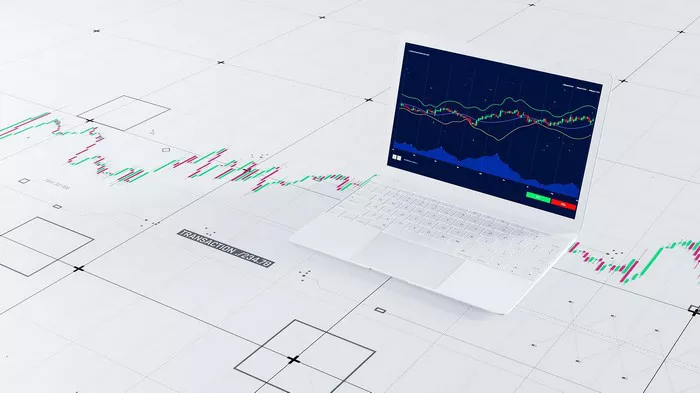Foreign exchange (Forex) trading is a lucrative and exciting market where currencies are bought and sold, but it can be overwhelming for beginners. In this guide, we’ll break down the essential steps to get started with Forex trading, explain the key concepts, and help you understand how to approach this dynamic market.
Understanding Forex Trading
Forex trading involves buying one currency and selling another simultaneously. It operates 24 hours a day, five days a week, making it the most liquid financial market globally. The goal of Forex trading is to predict whether the value of a currency will rise or fall against another currency.
What is Forex?
Forex, short for “foreign exchange,” is the market where national currencies are traded against each other. The exchange rate between two currencies determines how much of one currency you need to exchange for the other. For example, if you are trading the euro against the U.S. dollar, you are predicting whether the euro will rise or fall in value compared to the U.S. dollar.
How Forex Trading Works
Forex trading is done in currency pairs, such as EUR/USD (Euro to U.S. Dollar), GBP/JPY (British Pound to Japanese Yen), and many others. Each currency pair is quoted in terms of how much one unit of the first currency is worth in the second currency. For example, if the EUR/USD pair is quoted at 1.20, it means that one euro is worth 1.20 U.S. dollars.
Setting Up for Forex Trading
To begin trading Forex, you’ll need the right tools, platforms, and knowledge. Here’s how you can get started.
Choosing a Reliable Forex Broker
Your first step in Forex trading is selecting a trustworthy Forex broker. A broker acts as an intermediary between you and the Forex market. Look for a broker that offers competitive spreads, a user-friendly trading platform, reliable customer service, and a strong regulatory framework.
Opening a Forex Trading Account
Once you have selected your broker, you’ll need to open a trading account. There are several types of accounts, such as standard accounts, mini accounts, and micro accounts. Each account type has different deposit requirements and leverage options. As a beginner, it’s recommended to start with a demo account to practice trading without risking real money.
Understanding the Trading Platform
Forex brokers typically provide a trading platform, such as MetaTrader 4 (MT4) or MetaTrader 5 (MT5). These platforms allow you to access the Forex market, place trades, and analyze the market with various tools and indicators. Spend time familiarizing yourself with the platform to make sure you’re comfortable with its features before you begin live trading.
Key Concepts You Must Know
Before diving into Forex trading, it’s important to understand some basic concepts. These terms will help you make informed decisions while trading.
Pip: The Unit of Measurement
A pip (percentage in point) is the smallest unit of price movement in the Forex market. It is used to measure the change in value between two currencies. In most currency pairs, a pip is equal to 0.0001. For example, if the EUR/USD moves from 1.1200 to 1.1201, it has moved one pip.
Leverage: Amplifying Your Potential Profits and Losses
Leverage allows you to control a large position with a smaller amount of capital. For example, if you have a leverage ratio of 100:1, you can control a $100,000 position with just $1,000 in your trading account. While leverage can amplify your profits, it also increases the risk of significant losses. As a beginner, it’s crucial to use leverage cautiously.
Lot Size: The Volume of Your Trade
Forex trades are executed in different “lot sizes,” which refer to the volume of a currency you are buying or selling. A standard lot is 100,000 units of the base currency, but there are also mini lots (10,000 units) and micro lots (1,000 units). The size of your trade will determine your potential profit or loss.
The Best Strategies for Forex Beginners
While Forex trading is highly speculative, beginners can use certain strategies to reduce risk and increase their chances of success. These strategies focus on analysis, risk management, and keeping emotions in check.
Technical Analysis: Understanding the Charts
Technical analysis involves analyzing historical price movements through charts and patterns. As a beginner, you’ll want to familiarize yourself with key chart types like line charts, bar charts, and candlestick charts. Indicators such as moving averages, Relative Strength Index (RSI), and Bollinger Bands can also help you identify potential entry and exit points.
Fundamental Analysis: Analyzing Economic Indicators
Fundamental analysis involves studying economic data, news, and events that can influence currency prices. Key economic indicators include interest rates, inflation data, and employment statistics. Central bank decisions and geopolitical events also play a significant role in currency values. For beginners, it’s important to stay updated on global news and economic reports that can impact the markets.
Risk Management: Protecting Your Capital
Risk management is crucial for success in Forex trading. Set a stop-loss order to limit your potential losses on a trade. A stop-loss order automatically closes your position if the market moves against you. Always use proper risk-to-reward ratios to ensure you are not risking too much capital on any single trade. As a general rule, only risk 1-2% of your account balance on each trade.
Psychology of Trading: Keeping Emotions in Check
One of the most important aspects of Forex trading is managing your emotions. Greed and fear are common emotions that can cloud your judgment and lead to poor trading decisions. Stick to your trading plan, avoid overtrading, and don’t chase after losses. Maintaining discipline and emotional control is essential for long-term success.
Types of Forex Orders
Understanding the types of orders you can place is essential for executing your trades effectively.
Market Orders: Buying or Selling at the Current Price
A market order is the most common type of order, where you buy or sell a currency pair at the current market price. This order type is ideal when you want to enter or exit the market immediately.
Limit Orders: Setting a Desired Price
A limit order allows you to set a price at which you want to buy or sell a currency. The order will only be executed if the price reaches your specified level. Limit orders are useful for traders who want to enter or exit a trade at a particular price.
Stop-Loss Orders: Minimizing Potential Losses
A stop-loss order automatically closes your position if the price moves against you by a certain amount. This order helps limit your losses and protect your capital. You can set a stop-loss order at a specific price level to avoid large losses if the market moves unfavorably.
Developing Your Trading Plan
A well-thought-out trading plan is the foundation of any successful Forex trader. Your trading plan should include your trading goals, risk tolerance, and the strategies you intend to use.
Setting Realistic Goals
Your goals should be specific, measurable, and achievable. For example, you might aim to make a consistent return of 5-10% per month. Setting realistic goals will help you stay focused and avoid taking unnecessary risks.
Choosing Your Trading Style
There are different types of trading styles, such as scalping, day trading, and swing trading. Each style has its own advantages and requires different levels of commitment. As a beginner, you might want to start with a longer-term trading style, like swing trading, to avoid the stress of day trading.
Sticking to Your Plan
Once you’ve developed your trading plan, it’s crucial to stick to it. Avoid making impulsive decisions based on emotions or short-term market movements. Consistency is key to success in Forex trading.
Conclusion
Forex trading can be a rewarding experience, but it requires knowledge, patience, and discipline. By understanding the basics, choosing a reliable broker, using proper strategies, and managing risk effectively, you can increase your chances of success. Remember, Forex trading is not a get-rich-quick endeavor, but with the right approach, you can develop the skills needed to navigate the market and make informed trading decisions. Stay focused, practice regularly, and always be mindful of the risks involved in Forex trading.
Related topics:


































